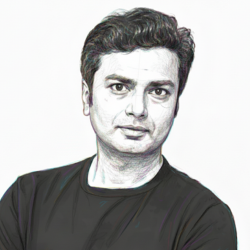Code as Poetry Experiment
An experimental project exploring the intersection of programming and poetry, where code itself becomes a form of artistic expression.
What happens when we treat code not just as functional instructions, but as a medium for artistic expression? This experimental project explores various ways that programming can become poetry.
Approaches Explored
- Semantic Poetry: Code that reads like poetry while still being functional
- Visual Programming: Using code structure and formatting as visual art
- Algorithmic Verse: Programs that generate poetry based on their own source code
- Conceptual Code: Programs that exist more as ideas than practical tools
Example: Semantic Poetry
def whisper(secrets):
for secret in secrets:
if secret.is_true():
heart.remember(secret)
else:
mind.forget(secret.gently())
return soul.at_peace()
def listen():
while world.is_noisy():
silence = find_quiet_moment()
if silence.duration > patience.threshold:
thoughts.settle()
break
return inner_voice.speak()
Visual Code Art
This approach uses indentation, spacing, and structure to create visual patterns that are pleasing to the eye while maintaining functionality.
*
/ \
/ \
/_____\
def pyramid(height):
for i in range(height):
spaces = " " * (height - i - 1)
stars = "*" * (2 * i + 1)
print(f"{spaces}{stars}")
Algorithmic Verse Generation
Programs that analyze their own source code to generate poetry, creating a recursive relationship between form and function.
Philosophy
This project challenges the boundary between technical and creative work, suggesting that they might be more closely related than we typically assume. Code, like poetry, is about expressing ideas in precise, meaningful ways. Both require careful attention to structure, rhythm, and meaning.
The intersection of programming and poetry reveals something fundamental about human expression: we seek beauty and meaning in all our creations, even the most technical ones.
